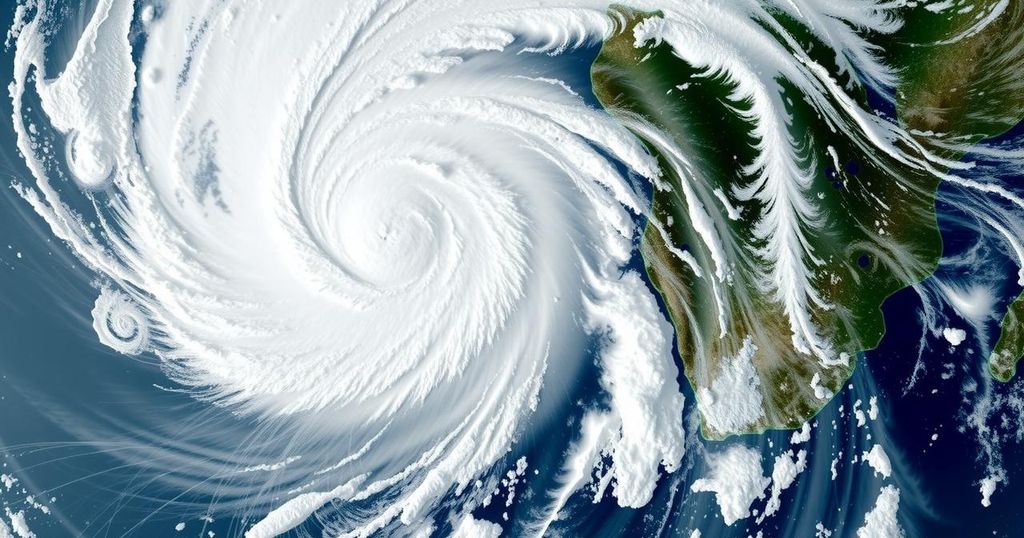Tropical Cyclone Chido Threatens Southern Africa: Update on December 14, 2024
Tropical Cyclone Chido is impacting Southern Africa, having struck Mayotte and the Comoros with heavy rains and winds. Approximately 2.5 million people are in its trajectory, with authorities issuing warnings in Mozambique, Malawi, and Comoros. The cyclone is projected to make landfall in northern Mozambique on December 15, prompting emergency preparations across the region.
Tropical Cyclone Chido, as of December 14, 2024, has intensified and impacted areas including Mayotte, the Comoros, and is predicted to reach Mozambique. Two and a half million individuals reside in the projected path of the cyclone, with a significant population affected in Mozambique, Malawi, and the Comoros. Authorities across the region are currently conducting assessments and issuing warnings, as the cyclone could lead to hazardous conditions such as flooding and mudslides. Chido is expected to make landfall in northern Mozambique on December 15 and produce rainfall amounts upwards of 200mm in some regions, which poses a risk of flash floods and infrastructure damage.
The trajectory of Tropical Cyclone Chido has raised concerning implications for Southern Africa, primarily affecting populations in Mozambique, Malawi, and the Comoros Islands. The cyclone, noted for its severity, has prompted regional authorities to issue warnings and initiate risk mitigation measures. The last significant cyclones in this region have had devastating effects, making timely updates and emergency preparedness critical to mitigate potential loss of life and property damage.
In summary, Tropical Cyclone Chido poses a severe threat to numerous countries in Southern Africa, particularly Mozambique, Malawi, and the Comoros Islands. With significant rainfall and strong winds anticipated, authorities are issuing advisories and mobilizing resources to ensure public safety and mitigate disaster impact. Continued monitoring and preparedness measures are essential as Cyclone Chido progresses towards its expected landfall in Mozambique.
Original Source: reliefweb.int




Post Comment